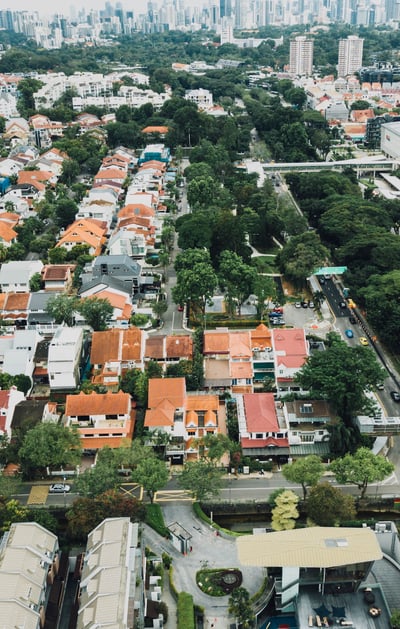
While we often enjoy a soft drizzle or thrilling thunderstorm, the water pouring from the sky during these events usually does more harm than good in the city.
Ever looked out the window to see your kids playing in puddles and said to yourself, Awwww cute! Look how much fun they’re having.
*insert smiley face*
The problem is that puddle is not nearly as cute as your little beans. In fact, the very fact that water is pooling in your yard proves you need a stormwater management plan.
Why? Because stormwater brings with it a wide variety of ills. It is environmentally damaging and dangerous to public health, and thus far our cities aren’t doing nearly enough to combat it. The good news is, you can.
Why Should You Work to Manage Stormwater?
 Before you take the time to craft a stormwater management plan, you’re likely wondering why you need one in the first place.
Before you take the time to craft a stormwater management plan, you’re likely wondering why you need one in the first place.
Stormwater is a serious problem in cities across the world. According to the EPA, “In developed areas, impervious surfaces such as pavement and roofs prevent precipitation from naturally soaking into the ground. Instead, water runs rapidly into storm drains, sewer systems and drainage ditches.”
In other words, it ain’t got nowhere to go, so it goes into our streets, yards, sewers and ditches. Getting all up in your business … and your kids’ puddles. So why, you ask again, is that a problem?
Buckle up. There are lots of reasons.
The first and perhaps most disgusting is that excessive stormwater leads to combined sewer overflows (CSO). That’s when there’s too much water for our sewers to handle, so they flow up onto streets … carrying with them the contents of your toilet.
Voilà: instant pollution and disease, right in our city streets.
According to the American Journal of Public Health, between 6 and 40 percent of gastrointestinal diseases are due to waterborne diseases carried through contaminated drinking water. By young adulthood, 17 to 32 percent of people have fallen prey to Cryptosporidium, a nasty parasite that causes persistent flu-like symptoms.
Other negative side effects include:
- Habitat destruction
- Stream bank erosion
- Muddiness and oxygen depletion in waterways
- Contaminated coastal and freshwater systems
- Damage to city infrastructure
- Algal blooms
- Downstream flooding
Good times, right?
If you said, “No, that is not good times!” then you are correct. Let’s figure out what to do about it.
How to Make a Viable Stormwater Management Plan

So now you know why you need one, it’s time to make that stormwater management plan for real. While the process certainly isn’t easy, it’s a pretty simple process consisting of the following steps:
- Survey the site: Each nook and cranny of a city is different. The elevation changes, nearby waterways, available green space, plants, existing infrastructure (e.g. dykes) and more all combine to create a unique situation. Before you can make a plan, you must understand the environment completely.
- Examine solutions: Once you know what you’re dealing with, it’s time to explore the available options to determine which best suits the site. In very urban places, a green roof may do the most good, whereas in more suburban spots, rain gardens and bioswales are perfect.
- Design the system: After choosing a solution (or solutions), it’s time to create the design. Despite common perception, there are many ways to design each system. A green roof, for instance, can consist of so much more than a sedum mat, while a rain garden should contain more than an army of marching hostas. Each system has its own possibilities, so explore them all.
- Implement the design: Once you have a design, it’s time to build your new stormwater solution to match it. From groundbreaking to the finishing touches, your approach should take into account the needs of the surrounding environment and adjust as necessary to keep it healthy.
- Steward the system: No system maintains over time without help. Once you install the main components and ensure that they are working, your stormwater solution will start to do its job. You must return again and again, however, to ensure each part is working and that the system can still handle the requirements of the site. Where necessary, you must adjust on an ongoing basis.
Naturally, you will most likely need to collaborate with a certified green roofer or landscape architect on this project. That way you have access to the best technologies for your unique situation, and can make the best possible plan.
Get Help Designing Your Stormwater Solution Today
While combating the ills of stormwater takes some work, it’s totally worth it. For your planet, your city, your family. So, ready to get the help you need making your stormwater management plan?
Whether you want a rooftop garden, a bioswale, a rainwater collection system or any other stormwater solution, Ecogardens is here to help. We offer cutting-edge solutions at prices you can afford, and the friendliest darn experience in town.
Really. We did a city-wide poll. We’re broke from all the polling now, but we’re still glad we did it. Because, winners.
Seriously, though, get in touch with us at Ecogardens. Let’s make a difference.

